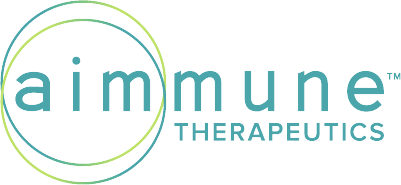What is PALFORZIA?
PALFORZIA is a treatment for people who are allergic to peanuts. PALFORZIA can help reduce the severity of allergic reactions, including anaphylaxis, that may occur with accidental exposure to peanut. PALFORZIA may be started in patients aged 4 through 17 years old. If you turn 18 years of age while on PALFORZIA treatment you should continue taking PALFORZIA unless otherwise instructed by your doctor.
PALFORZIA does NOT treat allergic reactions and should not be given during an allergic reaction.
You must maintain a strict peanut-free diet while taking PALFORZIA.
It is important to note that PALFORZIA can cause severe allergic reactions called anaphylaxis that may be life-threatening. Patients should stop taking PALFORZIA and get emergency medical treatment right away if they have any of the following symptoms after taking PALFORZIA: trouble breathing or wheezing, chest discomfort or tightness, throat tightness, trouble swallowing or speaking, swelling of your face, lips, eyes, or tongue, dizziness or fainting, severe stomach cramps or pain, vomiting, or diarrhea, hives (itchy, raised bumps on skin), or severe flushing of the skin. Because of the risk of severe allergic reactions, PALFORZIA is only available through a restricted program called the PALFORZIA Risk Evaluation and Mitigation Strategy (REMS) Program. Patients should talk to their healthcare provider for more information about the PALFORZIA REMS program and how to enroll.
Treating peanut allergy
Parents may experience concern when a child is diagnosed with peanut allergy. Families learn to practice important strategies, such as vigilance and avoidance, to manage their child’s allergy. Used together with these strategies, PALFORZIA may help reduce the severity of allergic reactions that may occur with accidental exposure to peanut.
How PALFORZIA is helping children aged 4 through 17 years
Children who are on PALFORZIA may be able to gradually decrease their sensitivity to small amounts of peanuts that may be hidden in foods. PALFORZIA can be a daily part of how a family and their allergist manage peanut allergy.
What families have said about PALFORZIA
Families have spoken about the impact of PALFORZIA on their lives. One father whose son took part in the PALFORZIA clinical trial said “he wanted to do it for not just himself, but for the other kids, too. That makes me a very proud dad.”

How to take PALFORZIA
PALFORZIA is an oral immunotherapy that helps to gradually decrease sensitivity to small amounts of peanuts that may be hidden in food. Children go through 3 phases during therapy. The first phase, called Initial Dose Escalation, is done on a single day in your allergist’s office. At this appointment, your allergist will start by administering small, increasing doses of PALFORZIA. If your child tolerates this phase, your allergist may begin the next phase of treatment with PALFORZIA.
You will return to the allergist’s office the next day, so your child can begin the Up-Dosing phase of treatment. Your allergist will administer the first dose of PALFORZIA and monitor carefully to make sure your child can keep taking PALFORZIA. If your child tolerates this dose, you will continue to give your child this dose level at home every day. Your child will return to the allergist’s office about every 2 weeks to be assessed for a new Up-Dosing level.
The third phase, called Maintenance Dosing, begins after your child tolerates all 11 dose levels of the Up-Dosing phase. In the third phase of therapy, the daily dose will remain consistent.
Parents should keep in mind that PALFORZIA is not a cure, so children must maintain a strict peanut-free diet and carry injectable epinephrine.
Is PALFORZIA right for your child?
Every child with peanut allergy is unique. It’s important to discuss treatment options with your allergist. Only you and your doctor can determine if PALFORZIA is right for your child. Considerations include other medical conditions, making time in your child’s schedule for treatment and making the commitment to follow through. You and your allergist may decide that the potential benefits of PALFORZIA outweigh its risks.
Talk to your allergist about PALFORZIA
If you are considering PALFORZIA for your child, visit Palforzia.com and learn how to get ready for a conversation with your allergist. You can also find dosing information, as well as tips and resources on support programs, financial assistance for eligible patients, and savings opportunities. The first and only FDA-approved peanut allergy treatment may be an approach your family can take to help manage your child’s peanut allergy, in addition to practicing peanut avoidance.

IMPORTANT SAFETY INFORMATION
PALFORZIA can cause severe allergic reactions called anaphylaxis that may be life-threatening.
- You will receive your first dose in a healthcare setting under the observation of trained healthcare staff.
- You will receive the first dose of all dose increases in a healthcare setting.
- In the healthcare setting, you will be observed for at least 1 hour for signs and symptoms of a severe allergic reaction.
- If you have a severe reaction during treatment, you will need to receive an injection of epinephrine immediately and get emergency medical help right away.
- You will return to the healthcare setting for any trouble tolerating your home doses.
Stop taking PALFORZIA and get emergency medical treatment right away if you have any of the following symptoms after taking PALFORZIA:
- Trouble breathing or wheezing
- Chest discomfort or tightness
- Throat tightness
- Trouble swallowing or speaking
- Swelling of your face, lips, eyes, or tongue
- Dizziness or fainting
- Severe stomach cramps or pain, vomiting, or diarrhea
- Hives (itchy, raised bumps on skin)
- Severe flushing of the skin
Because of the risk of severe allergic reactions, PALFORZIA is only available through a restricted program called the PALFORZIA Risk Evaluation and Mitigation Strategy (REMS) Program. Talk to your healthcare provider for more information about the PALFORZIA REMS program and how to enroll.
You should NOT take PALFORZIA if you have uncontrolled asthma, or if you ever had eosinophilic esophagitis (EoE) or other eosinophilic gastrointestinal disease.
Tell your doctor if you are not feeling well prior to starting treatment with PALFORZIA. Your doctor may decide to delay treatment until you are feeling better. Also tell your doctor about any medical conditions you have and if you are taking or have recently taken any other medicines, including medicines obtained without a prescription and herbal supplements.
Your doctor may decide that PALFORZIA is not the best treatment if:
- You are unwilling or unable to receive (or self-administer) injectable epinephrine.
- You have a condition or are taking a medication that reduces the ability to survive a severe allergic reaction.
What are the possible side effects of PALFORZIA?
The most commonly reported side effects of PALFORZIA were: stomach pain, vomiting, feeling sick, itching or burning in the mouth, throat irritation, cough, runny nose, sneezing, throat tightness, wheezing, shortness of breath, itchy skin, hives, and/or itchy ears.
PALFORZIA can cause severe allergic reactions called anaphylaxis that may be life-threatening.
PALFORZIA can cause stomach or gut symptoms including inflammation of the esophagus (called eosinophilic esophagitis). Symptoms of eosinophilic esophagitis can include:
- Trouble swallowing
- Food stuck in throat
- Burning in chest, mouth, or throat
- Vomiting
- Regurgitation of undigested food
- Feeling sick
For additional information on the possible side effects of PALFORZIA, talk with your doctor or pharmacist.
You are encouraged to report negative side effects of prescription drugs to the FDA. Visit www.fda.gov/medwatch, or call 1-800-FDA-1088.
Please see full Prescribing Information and Medication Guide, including an Important Warning about anaphylaxis.

PALFORZIA is a trademark of Aimmune Therapeutics, Inc.
AIMT-PM-USA-0592 01/21





